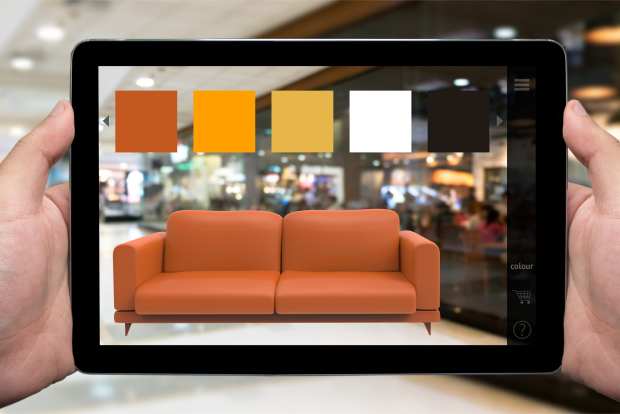Look At The Pretty Pictures: Behind Visual Commerce’s Rise

Retail involves all senses, but as a new decade approaches, it’s become clear that visual commerce is gaining even more steam.
To get a better sense of what’s happening in the world of visual retail, PYMNTS recently caught up with Beck Besecker, CEO and co-founder of Marxent, a company that sells 3D commerce technology. Marxent is finding itself in increasing demand among sellers of furniture and home goods, and that makes Besecker a good tour guide for this growing area of commerce.
Cool Thing Status
The story he told is one of technology moving from “cool-thing” status to an increasingly expected part of the shopping experience (without losing its cool, in fact). “When AR came out,” Besecker said, “it was neat and novel and different. It was the first new mobile experience we’d had in many years.”
Indeed, augmented reality (AR) and other visual technologies can be seen as a progression from the earlier days of eCommerce, from all those photos, images and videos placed on retail websites. The goal was — and is — not only to simulate and bolster the physical shopping experience, but to provide confidence-building tools for consumers considering purchases.
And nowhere is this more true than in selling large, expensive goods, like furniture. So-called 3D product spins are the set standard, enabling potential buyers to see the item how they want it, customized and all, to get a keen visual handle on what they are actually buying to display in their living room.
It’s still early days for AR, virtual reality (VR) and 3D product visualization, but evidence is mounting that the technology does indeed lead to more sales and larger average order values, at least according to Besecker. For instance, if a room view is offered on a merchant product page, that tool gets used at least 50 percent of the time. As well, consumers who use that tool tend to have a 60 to 70 percent increase in shopping cart additions than other consumers. And for pages or products that include augmented reality features, consumers spend four times longer on them than what would normally be the case, Besecker noted.
Glasses and Social Commerce
That’s not all that’s happening with visual commerce.
Recent evidence of this ongoing push — among the main and increasing trends in the global digital economy — comes from Snap as it tries to find a stronger presence for itself amid the world of social media and the commerce enabled by that type of platform. With new 3D effects included for Snapchat use, Snap has reportedly introduced its third generation of wearable sunglass cameras called Spectacles. Users can, for instance, capture 3D snaps that have an effect of side-to-side depth due to dual-angle cameras, according to reports.
The glasses have a lightweight design for all-day wear and are made from one stainless steel sheet. They come in a “mineral” color as well as carbon black. And the units have a charging case for storage as well as powering up.
The new hardware has two cameras, with one at each of the outside top corners of the lenses to make for the 3D effects. They record at 60 fps and capture in HD. Audio comes in through an array of four microphones. There is also a capture button to trigger video or photo shooting on either side.
Beyond 3D snaps, the reports noted that there are 3D filters that add augmented reality graphics effects to videos that are captured, along with 3D lenses that provide characters and stickers to their snaps. The reports also noted that users can take advantage of 3D viewing.
Expect more such developments and retail innovation in the coming months.
